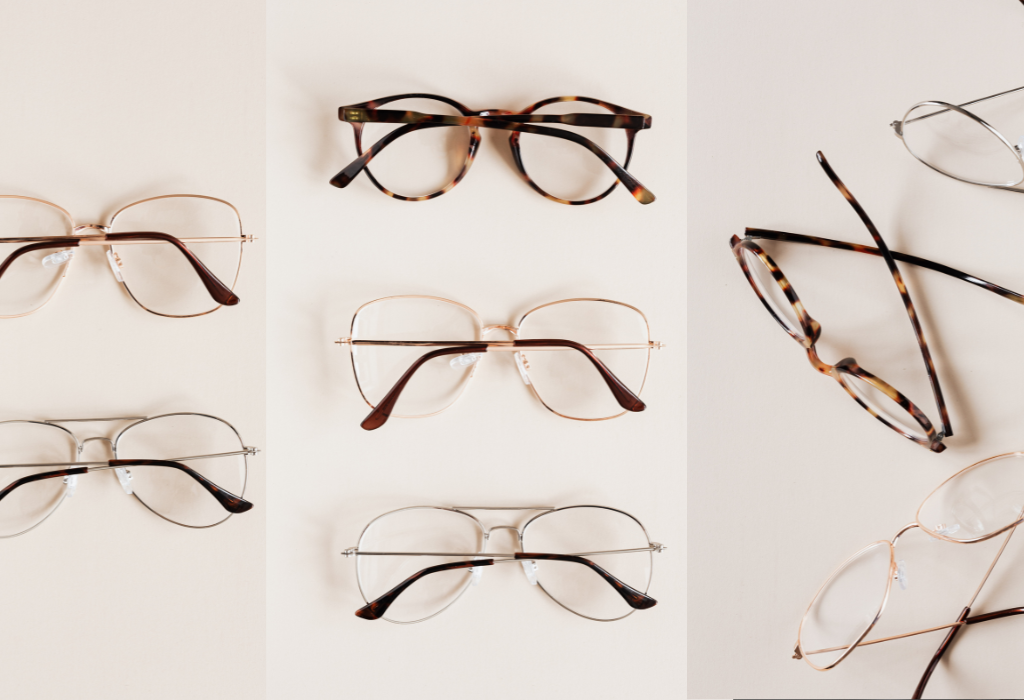Most of us have a drawer containing a collection of old sunglasses, leaving us with a common dilemma: what to do with them? While tossing them in the trash feels wasteful, the correct alternative is often unclear.
The scale of this problem is staggering. In North America alone, more than 4 million pairs of glasses are discarded annually, contributing over 250 metric tons of non-biodegradable waste to landfills. This massive waste stream is a direct result of our linear “take-make-waste” economy – a model where raw materials are used to create a product that is used once and then discarded.
The core issue is that sunglasses are a recycling nightmare. They are a “composite material,” a fusion of plastic frames, metal hinges, and coated lenses. Standard municipal recycling facilities are not designed to separate these bonded materials, so the entire item is filtered out as contamination and sent directly to a landfill.
Trashing sunglasses is environmentally costly. The solution lies in a different approach: embracing a “circular” model. This guide provides a complete toolkit for “Repair, Remanufacture, Reuse, and Recycle” to help transform your old eyewear from a liability into a sustainable asset.
The “Composite Material” Problem
To solve this problem, we must first understand it. The term “composite material” is key.
Your local recycling facility, or Municipal Recycling Facility (MRF), relies on speed to sort simple materials like plastic bottles and aluminum cans. A pair of sunglasses, however, is a complex object. It might contain:
- Frames: Cellulose acetate, nylon, or other plastics.
- Lenses: Polycarbonate or acrylic, often with metal-based coatings.
- Hardware: Tiny steel or alloy hinges and screws.
When this complex item arrives at the facility, it fails the sorting process. Modern recycling plants use optical sorters that scan for specific types of plastic, like PET #1 (bottles) or HDPE #2 (jugs). A pair of sunglasses, with its unknown polymers, metal hardware, and chemical lens coatings, is unidentifiable to these systems.
It is therefore rejected as contamination and sent directly to a landfill. This contamination is a serious issue; even small items like this can get mixed into bales of “good” recycling, causing the entire bale to be rejected and sent to a landfill. This is why nearly all sunglasses put in a curbside bin end up as waste.
The Hidden Footprint: Manufacturing Waste
The problem doesn’t start when you throw your sunglasses away. It starts the moment they are made.
The manufacturing process for acetate frames (a common “plant-based” plastic) is incredibly wasteful. To create a single pair of frames, manufacturers cut the shape from a large sheet of acetate.
The material left behind—the cutouts for the lenses and the surrounding scrap—is often discarded. This “hidden” waste can account for up to 75% of the raw acetate material. This means that for every one pair of glasses made, three equivalent pairs worth of material are thrown away before the product is even assembled.
This is a critical flaw in the linear manufacturing model. When you add this to the 250 metric tons of post-consumer waste, the true environmental impact of the eyewear industry becomes clear. Any real solution must address both manufacturing and disposal.
To understand this “hidden waste,” the video below looks at the process of cutting acetate frames and the material that is often discarded.
First Action: The Power of Simple Repair
Many sunglasses are discarded for problems that can be fixed in 60 seconds. Before you toss a pair, perform this simple triage. This is the most sustainable action, as it requires almost zero new resources.
- For a Loose Screw: A loose hinge is the most common failure. It can be tightened in seconds with a precision screwdriver. For a long-term fix, apply a tiny dab of clear nail polish over the tightened screw head. This acts as a light-duty seal and prevents it from backing out again.
- For Missing Nose Pads: These are also a simple fix. Replacement pads for “snap-on” or “screw-in” types are inexpensive and easy to install yourself.
- For Bent Plastic Frames: Plastic frames can often be saved. Gently heat the bent arm with a hair dryer on low or under hot (not boiling) tap water for 30-60 seconds. This makes the acetate pliable. Carefully bend it back into alignment and hold it as it cools.

Second Action: Global Reuse Through Donation
For sunglasses in good, usable condition, donation is the most impactful “reuse” option.
This is more than charity; it is a powerful socio-economic tool. The World Health Organization reports that at least 2.2 billion people globally have a vision impairment, with at least 1 billion of those cases being preventable or unaddressed. For many, the barrier is simply access and cost.
Your old non-prescription sunglasses provide critical UV protection to someone in an equatorial region, while a pair of prescription glasses can directly restore a person’s ability to work, learn, and support their family.
The most reputable program is the Lions Club International “Recycle for Sight”. This global organization collects, refurbishes, and redistributes used eyewear. You can find collection boxes in many communities. Participating Walmart Vision Centers, local libraries, and optometrist offices often serve as drop-off points.
Other excellent programs include OneSight and ReSpectacle, which also work to get usable eyewear to those in need.
The Ultimate Solution: Remanufacturing Your Frames
This is the most common scenario: The frames are perfect, but the lenses are hopelessly scratched.
Most people assume this is the end of the line. But this is the single most powerful sustainability action you can take. The solution is re-lensing, a form of remanufacturing.
The environmental argument is overwhelming. As we’ve seen, the true carbon cost of new eyewear is in the manufacturing of the frames.
This involves the extraction of raw materials, energy-intensive plastic molding, and the forging of metal components. Research shows that manufacturing a new pair of glasses can emit up to 8.2 pounds of CO2e. 4
By “re-lensing,” you are engaging in a core principle of the circular economy known as remanufacturing. Unlike recycling, which breaks a product down into its raw (and lower-quality) materials, remanufacturing retains the high-value, energy-intensive component—the frame—and simply replaces the part that has failed. This is vastly more efficient and environmentally friendly. You are:
- Reducing Landfill Waste: Directly rescuing a high-quality, non-biodegradable frame from the 250-metric-ton waste stream.
- Slashing Manufacturing Demand: Bypassing the entire high-carbon, energy-intensive production cycle.
- Fighting “Hidden” Waste: Avoiding the 75% material waste from new frame manufacturing.
This process is now simple. Specialist services, like The Sunglass Fix, are pioneering this circular model. They can take any frames you love, from designer to vintage, and fit them with new, high-quality UV-protective lenses. The process of replacing sunglass lenses is the ultimate way to create a “new” pair of sunglasses for a fraction of the cost and environmental impact.

The Last Resort: Specialized Deconstruction and Recycling
If your sunglasses are truly beyond any form of repair, donation, or reuse, there is one final step. Do not put your whole sunglasses in the curbside recycling bin.
To give the materials a chance at recycling, you must deconstruct the product.
- Pop out the lenses (often plastic).
- Use a precision screwdriver to remove the metal hinges from the plastic frame.
The tiny metal parts can go with scrap metal recycling. The plastic components and lenses, however, must be sent to a specialized mail-in program. These programs are the “Climate Tech” solution to composite waste.
Services like TerraCycle or BRAD have the technology to handle this. They “shred and separate” these mixed materials using advanced mechanical and thermal processes.
This is far beyond the capability of your local facility. These services then repurpose the materials into new products, such as sustainable building materials, bricks, and benchtop sheets, finally closing the loop.

Embracing a Circular Mentality
That old pair of sunglasses in your drawer represents a choice.
It can become part of a 250-metric-ton waste problem. Or, it can be a source of charity, a smart upgrade, or a raw material for a new circular business.
This toolkit empowers you to move beyond a “disposable” mindset. Before you trash, Repair. Before you replace, Re-Lens. If you no longer want them, Reuse. And only as the absolute final step, Recycle them the right way.
These small changes stop your old eyewear from being an environmental liability. They turn it into a powerful example of the circular economy in action.
Frequently Asked Questions
Why can't I throw old sunglasses in my curbside recycling bin?
Sunglasses are "composite materials"—a mix of different plastics, metals, and coated lenses. Your local recycling facility is not designed to separate these. The entire item will be filtered out as contamination and sent to a landfill.
What is the best option for sunglasses that are still in good condition?
Donation is the best "reuse" strategy. A program like the Lions Club International "Recycle for Sight" collects, refurbishes, and distributes them to people in need globally. You can typically drop them off at a local optometrist or participating retailer.
What is the most eco-friendly solution for scratched lenses?
The most sustainable solution is to replace the lenses. Frame manufacturing is the most carbon-intensive part of the eyewear life cycle. By "re-lensing," you prevent a functional item from entering the landfill and bypass the environmental impact of new manufacturing.
What is "hidden waste" in eyewear manufacturing?
"Hidden waste" refers to the materials discarded during the manufacturing process. When cutting frames from a sheet of acetate, up to 75% of the plastic material can be wasted. This happens before the product is even sold.
References
ESG The Report: Eyeing Environmental Sustainability: How the Eyewear Industry Is Revolutionizing Its Practices
WestportCT.gov: Separate Collection of Glass Bottles & Jars – A better way to recycle!
World Health Organization (WHO): Blindness and vision impairment
Arbor.eco: What’s the carbon footprint of a sunglasses?





